You’ve just spotted a beautiful Fiesta piece at an estate sale, but is that turquoise from the 1930s or the 1990s reissue?
Or maybe you’re staring at your growing collection, wondering which colors are actually rare versus just discontinued.
With over 50 colors released since 1936, identifying and understanding Fiesta’s vast palette can feel overwhelming, especially when some shades share the same name across different eras, while others look deceptively similar but command vastly different prices.
The challenge isn’t just knowing what colors exist; it’s understanding when each was produced, which ones are still available today, and how to distinguish the valuable vintage pieces from modern reproductions.
Whether you’re a serious collector tracking down every hue or simply curious about that cheerful yellow plate you inherited from grandma, navigating Fiesta’s color timeline requires a reliable guide.
This comprehensive article walks you through every Fiesta color released since 1936, from the iconic original five to today’s contemporary shades.
You’ll discover the stories behind each era’s palette, learn to distinguish vintage from modern pieces, and gain the knowledge to confidently identify, collect, and appreciate these colorful treasures.
The Original Five: Where It All Began (1936)
Fiesta’s debut featured five carefully chosen colors that would define the brand’s cheerful aesthetic:
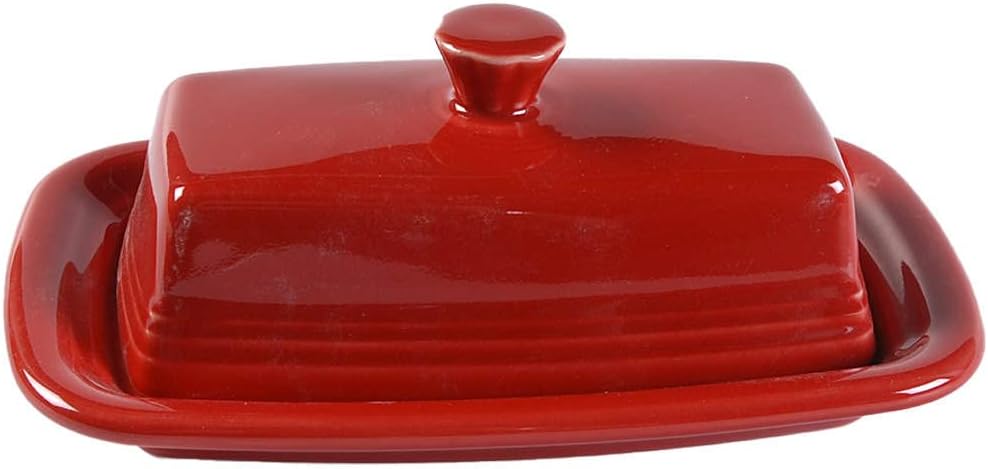
Red – The most iconic and controversial shade, created with uranium oxide that gave it a brilliant, radioactive orange-red glow. This formulation was discontinued during WWII when uranium was diverted for military use.
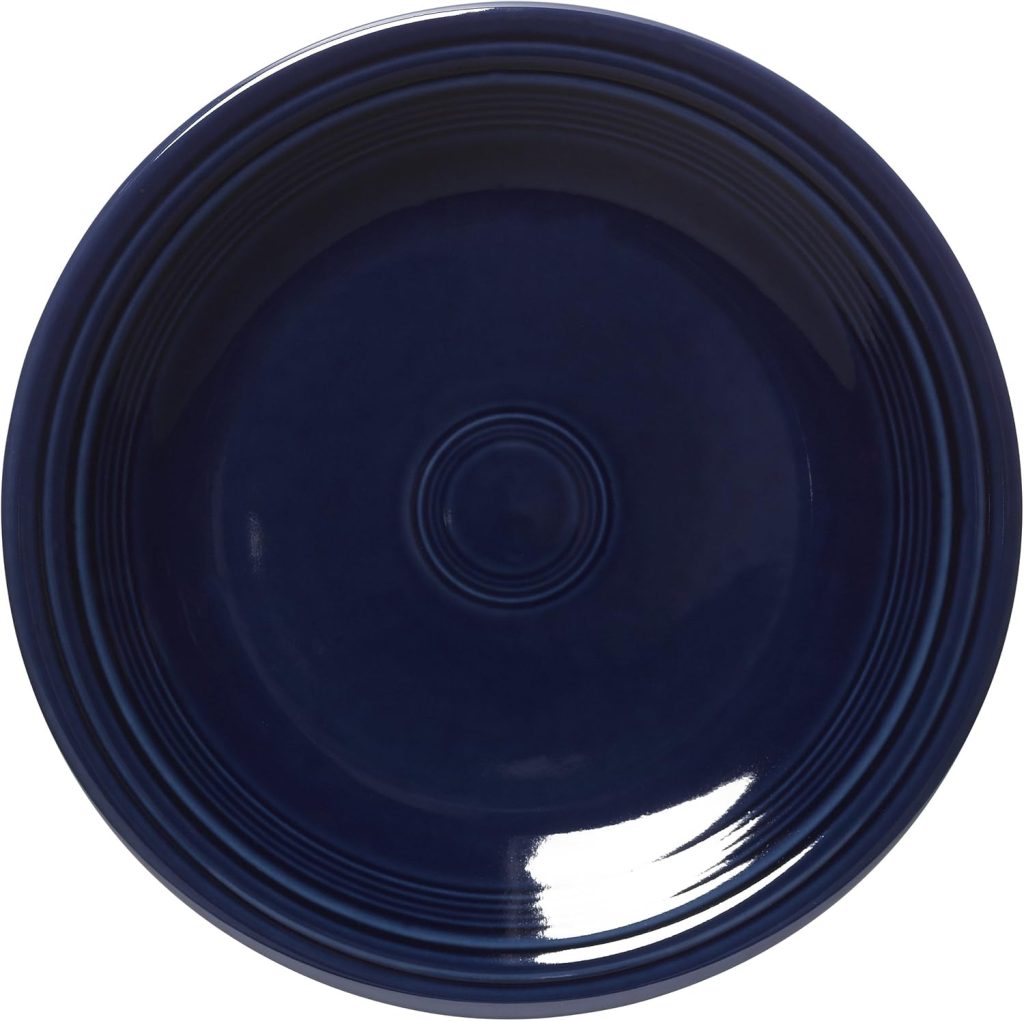
Cobalt Blue – A deep, saturated blue that became synonymous with Art Deco styling and remains in production today.
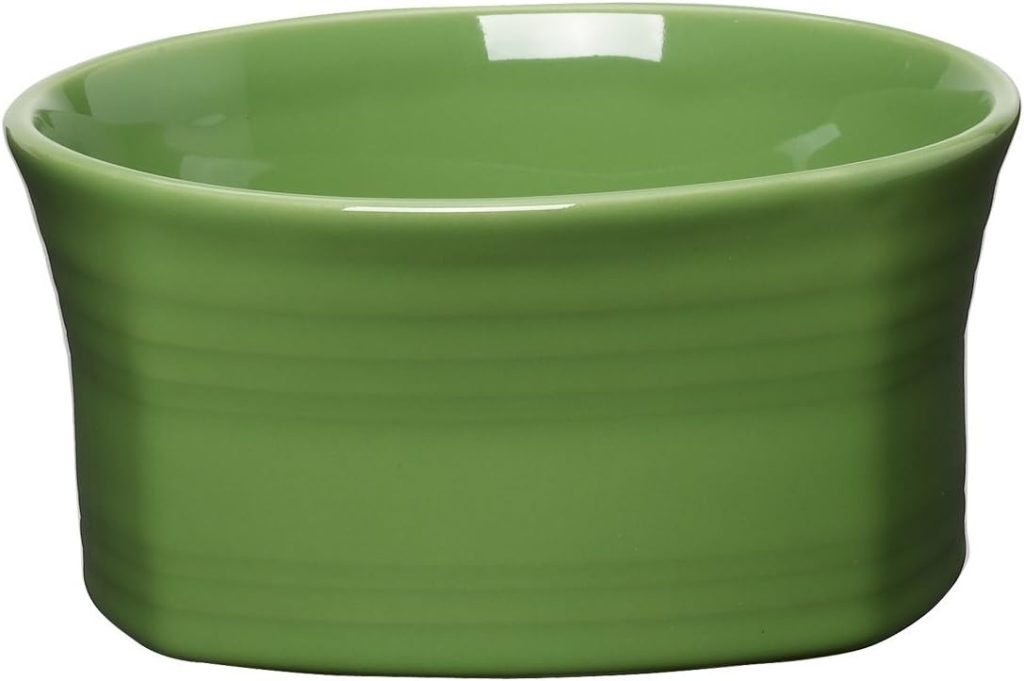
Light Green – A soft, minty shade that captured the freshness of 1930s modernism.
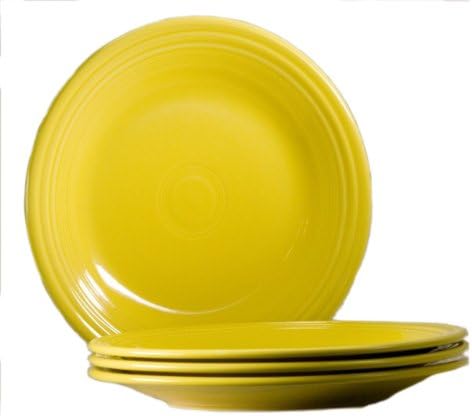
Yellow – A warm, sunny hue that brought brightness to Depression-era tables.
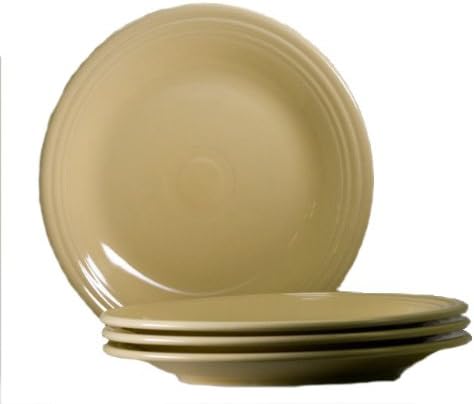
Ivory – The subtle neutral that allowed the brighter colors to shine while offering versatility.
These five colors established Fiesta’s revolutionary “California Colored” concept, encouraging homemakers to create personalized place settings by combining different hues.
The mix-and-match philosophy was groundbreaking for its time, setting Fiesta apart from its competitors.
The Most Popular Fiesta Colors explores why some of these original shades remain beloved by collectors today.
Vintage Era Evolution (1937-1972)
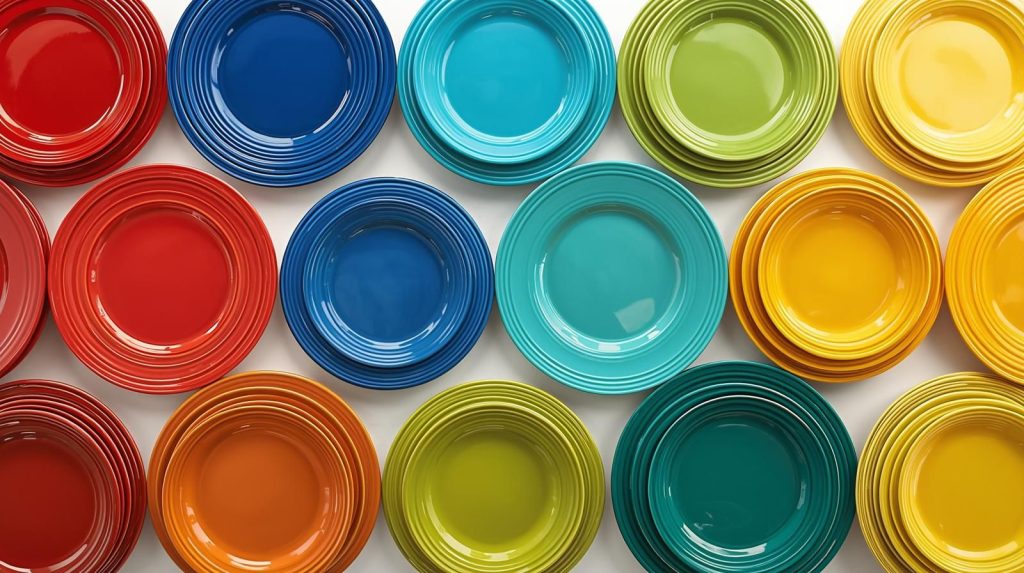
As Fiesta gained popularity, Homer Laughlin expanded the color palette to keep pace with changing design trends:
1930s-1940s Additions
Turquoise (1937-1969) – A vibrant blue-green that became one of Fiesta’s longest-running and most popular colors.
Red – New Formulation (1943-1944, 1959-1972) – After the uranium-based red was discontinued, a new depleted uranium version appeared briefly, followed by a non-radioactive formulation in 1959.
The Fabulous 1950s
Rose (1951-1959) – A dusty pink that reflected the decade’s love of pastels.
Chartreuse (1951-1959) – A yellow-green shade that epitomized 1950s modern design.
Forest Green (1951-1959) – A deep, rich green that provided sophisticated contrast.
Gray (1951-1959) – An elegant neutral introduced alongside the 1950s color group.
These four colors were introduced simultaneously in 1951, creating what collectors call the “1950s colors” and marking Fiesta’s adaptation to mid-century tastes.
Medium Green (1959-1969) – A brighter green that bridged the gap between earlier shades and the upcoming 1970s palette.
The Ironstone Era (1969-1972)
Mango Red (1970-1972) – A coral-toned red exclusive to the Ironstone line.
Turf Green (1969-1972) – An avocado-inspired shade reflecting 1970s earth tones.
Antique Gold (1969-1972) – A mustard yellow that completed the Ironstone trio.
These final vintage colors appeared on Fiesta Ironstone, a different body style with a more casual aesthetic. Many of these vintage shades are now extremely valuable.
Discontinued Fiesta Colors and Rare Shades reveals which hues command the highest prices among collectors.
The Hiatus & Triumphant Return (1973-1986)
In 1973, Homer Laughlin ceased Fiesta production after 37 years, responding to changing consumer preferences and increased foreign competition.
For 13 years, Fiesta disappeared from shelves, though vintage pieces continued circulating among collectors and thrift stores. This absence only intensified the desire for the colorful dishes.
In 1986, responding to collector demand and the American crafts revival, Homer Laughlin relaunched Fiesta with updated glazes, a lead-free formulation, and refreshed colors.
While maintaining the original spirit, the new Fiesta featured subtle differences in weight, finish, and color chemistry that distinguish it from vintage pieces.
Post-86 Color Explosion (1986-Present)
The Fiesta revival unleashed an unprecedented rainbow of hues, with Homer Laughlin regularly introducing and retiring colors to keep collectors engaged.
Late 1980s-1990s: The Relaunch
Core Colors (1986) – White, Black, Cobalt Blue, Rose, Apricot, and Yellow relaunched the brand with a mix of vintage homages and new shades.
Turquoise (1988-present) – Reintroduced after strong collector demand for this vintage favorite.
Periwinkle Blue (1989-2006) – A soft lavender-blue that became a 1990s bestseller.
Sea Mist Green (1991-2005) – A pale, misty green reflecting 1990s decorating trends.
Lilac (1993-1995) – A limited-edition purple that remains highly collectible.
Persimmon (1995-2006) – A burnt orange that captured Southwestern design influences.
Sapphire (1996-1997) – A deep blue-purple exclusive to Bloomingdale’s.
Chartreuse (1997-1999) – A modern take on the 1950s shade.
Pearl Gray (1999-2001) – A sophisticated neutral with subtle shimmer.
2000s: Expansion Era
The new millennium brought aggressive color experimentation:
Juniper (1999-2001) – A deep blue-green perfect for Y2K-era tables.
Cinnabar (2000-2002) – A dark burgundy-red reflecting rustic design trends.
Sunflower (2001-2006) – A golden yellow warmer than the original.
Plum (2002-2004) – A rich purple that sold out quickly.
Shamrock (2002-2004) – A true Kelly green for St. Patrick’s Day enthusiasts.
Tangerine (2003-2007) – A vibrant orange that became instantly popular.
Scarlet (2004-2017) – A true red that finally captured the original red’s spirit without uranium.
Peacock (2005-2017) – A stunning teal-blue that dominated 2000s color trends.
Sage (2006-2010) – A grayed green reflecting organic, natural aesthetics.
Evergreen (2006-2010) – A deep forest tone for traditional settings.
Chocolate (2006-2008) – A rich brown exclusive to Macy’s.
Heather (2008-2009) – A dusty lavender limited edition.
Ivory (2009-2017) – The vintage neutral made a modern comeback.
2010s-2020s: Contemporary Collection
Recent years have seen continued innovation with rotating seasonal colors:
Lemongrass (2010-present) – A yellow-green that’s become a modern staple.
Paprika (2010-2013) – A terra-cotta orange with Southwestern flair.
Marigold (2011-2012) – A golden orange seasonal release.
Claret (2012-present) – A wine-colored burgundy with sophisticated appeal.
Poppy (2013-2014) – A bright coral-orange summer shade.
Daffodil (2013-2016) – A cheerful, pale yellow.
Mulberry (2014-present) – A purple-red that’s proven enduringly popular.
Butterscotch (2015-present) – A warm caramel tone.
Slate (2015-2018) – A modern gray-blue.
Meadow (2016-2020) – A bright spring green.
Twilight (2016-present) – A deep navy blue.
Lapis (2017-present) – A medium blue between cobalt and periwinkle.
Turquoise (2017-present) – Continues as a permanent collection staple.
Flamingo (2020-present) – A vibrant coral-pink.
Peony (2022-present) – A soft blush pink.
Meadow (2022-present) – Reintroduced after popular demand.
Jade (2023-present) – A rich medium green.
The current production line features approximately 15-20 colors at any time, with regular rotations keeping collectors engaged.
Most Popular Fiesta Colors breaks down which modern hues have achieved cult status, while How to Mix and Match Fiesta Dinnerware Colors offers expert advice on creating cohesive table settings across different eras and shades.
Special Editions & Exclusives
Beyond standard production, Fiesta has released numerous special colors:
Retailer Exclusives – Major department stores have commissioned unique shades. Bloomingdale’s offered Sapphire, Macy’s introduced Chocolate, and several others, while specialty retailers have debuted limited quantities of exclusive hues.
Limited Editions – Colors like Lilac, Heather, and Marigold were produced in restricted quantities, making them highly desirable for completist collectors.
Commemorative Releases – Anniversary celebrations and special events have inspired one-time color releases with special backstamps.
These special editions often become valuable quickly due to their scarcity and are eagerly sought by dedicated collectors who appreciate their uniqueness.
Spotting the Difference: Vintage vs. Modern
Distinguishing vintage (pre-1973) from post-86 Fiesta is crucial for collectors:
Backstamps – Vintage pieces feature impressed marks reading “FIESTA H.L.C. U.S.A.,” while post-86 items include “LEAD FREE” and date codes.
Glaze Texture – Vintage glazes often have a slightly creamier, less glossy appearance compared to the more uniformly smooth modern finish.
Color Chemistry – While some colors share names across eras (Red, Cobalt, Yellow), the formulations differ subtly. Vintage red has a more orange undertone, while modern reds are truer.
Weight and Feel – Vintage pieces are often slightly heavier due to different clay body composition.
Crazing – Vintage pieces, especially ivory and yellow, frequently show fine crackling in the glaze, a sign of age, not damage.
For detailed authentication guidance, including side-by-side comparisons and expert identification tips, consult our comprehensive guide on Identifying Authentic Fiesta Colors (Old vs New).
Complete Color Reference Chart
| Era | Color | Years Produced | Status |
|---|---|---|---|
| Original | Red (uranium) | 1936-1943; 1959-1969 | Discontinued |
| Original | Cobalt Blue | 1936-1950 | Discontinued |
| Original | Light Green | 1936-1951 | Discontinued |
| Original | Yellow | 1936-1951 | Discontinued |
| Original | Ivory | 1936-1951 | Discontinued |
| Vintage | Turquoise | 1937-1969 | Discontinued |
| Vintage | Red (new) | 1943-44, 1959-72 | Discontinued |
| Vintage | Rose | 1951-1959 | Discontinued |
| Vintage | Chartreuse | 1951-1959 | Discontinued |
| Vintage | Forest Green | 1951-1959 | Discontinued |
| Vintage | Gray | 1951-1959 | Discontinued |
| Vintage | Medium Green | 1959-1969 | Discontinued |
| Vintage | Mango Red | 1970-1972 | Discontinued |
| Vintage | Turf Green | 1969-1972 | Discontinued |
| Vintage | Antique Gold | 1969-1972 | Discontinued |
| Post-86 | White | 1986-present | Available |
| Post-86 | Black | 1986-present | Available |
| Post-86 | Rose | 1986-2005 | Discontinued |
| Post-86 | Apricot | 1986-1998 | Discontinued |
| Post-86 | Turquoise | 1988-present | Available |
| Post-86 | Lemongrass | 2010-present | Available |
| Post-86 | Mulberry | 2014-present | Available |
| Post-86 | Butterscotch | 2015-present | Available |
| Post-86 | Twilight | 2016-present | Available |
| Post-86 | Lapis | 2017-present | Available |
| Post-86 | Flamingo | 2020-present | Available |
Note: This is a representative sample. For a complete list of all 50+ colors, visit Homer Laughlin’s official website.
Collecting Across the Rainbow
Fiesta’s enduring appeal lies in its color philosophy, the idea that dishes should bring joy and reflect personal style.
Whether you’re drawn to the historical significance of vintage uranium red, the sophisticated depth of Mulberry, or the cheerful brightness of Lemongrass, there’s a Fiesta color for every aesthetic.
Starting Your Collection:
- Begin with the currently available colors from authorized retailers for guaranteed authenticity
- Explore vintage markets, estate sales, and antique malls for discontinued shades
- Focus on a specific color family or era to create cohesion
- Don’t be afraid to mix vintage and modern pieces. The beauty of Fiesta is its versatility.
Care Tips:
- Most post-86 colors are dishwasher safe, though hand washing extends their life
- Vintage pieces should be hand-washed to preserve delicate glazes
- Avoid drastic temperature changes to prevent thermal shock
- Display rare colors away from direct sunlight to prevent fading.
Conclusion
From five bold hues in 1936 to today’s rotating palette of contemporary colors, Fiesta dinnerware has painted the American table for nearly nine decades.
Each color tells a story of design trends, cultural shifts, and the enduring appeal of affordable beauty.
Whether you’re a serious collector pursuing every shade or simply someone who loves a cheerful table, Fiesta’s rainbow continues to inspire creativity and joy at mealtime.
The beauty of Fiesta collecting is that it’s never truly complete.
With new colors introduced regularly and vintage treasures waiting to be discovered, there’s always another hue to pursue, another shade to fall in love with, another piece to complete your colorful story.